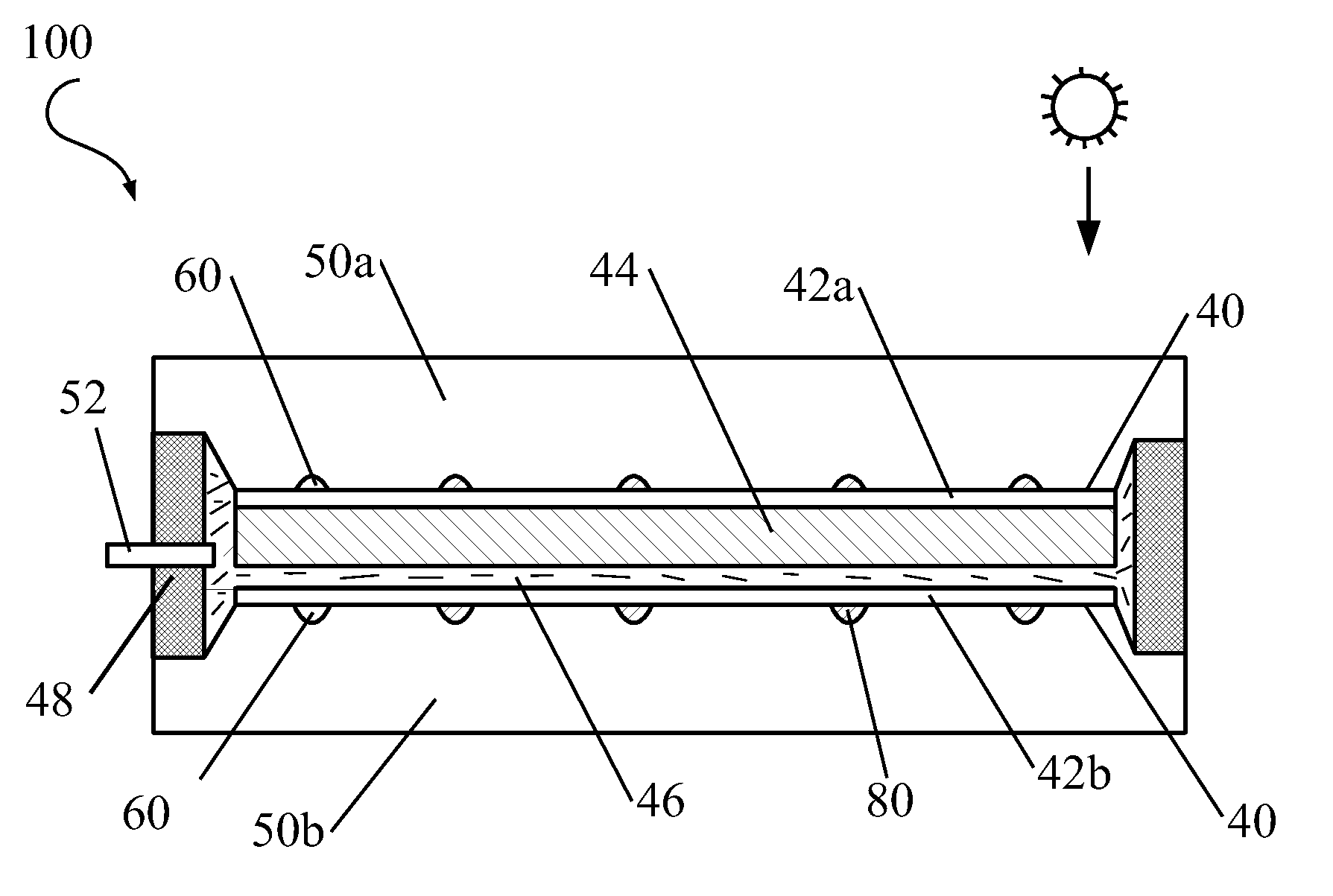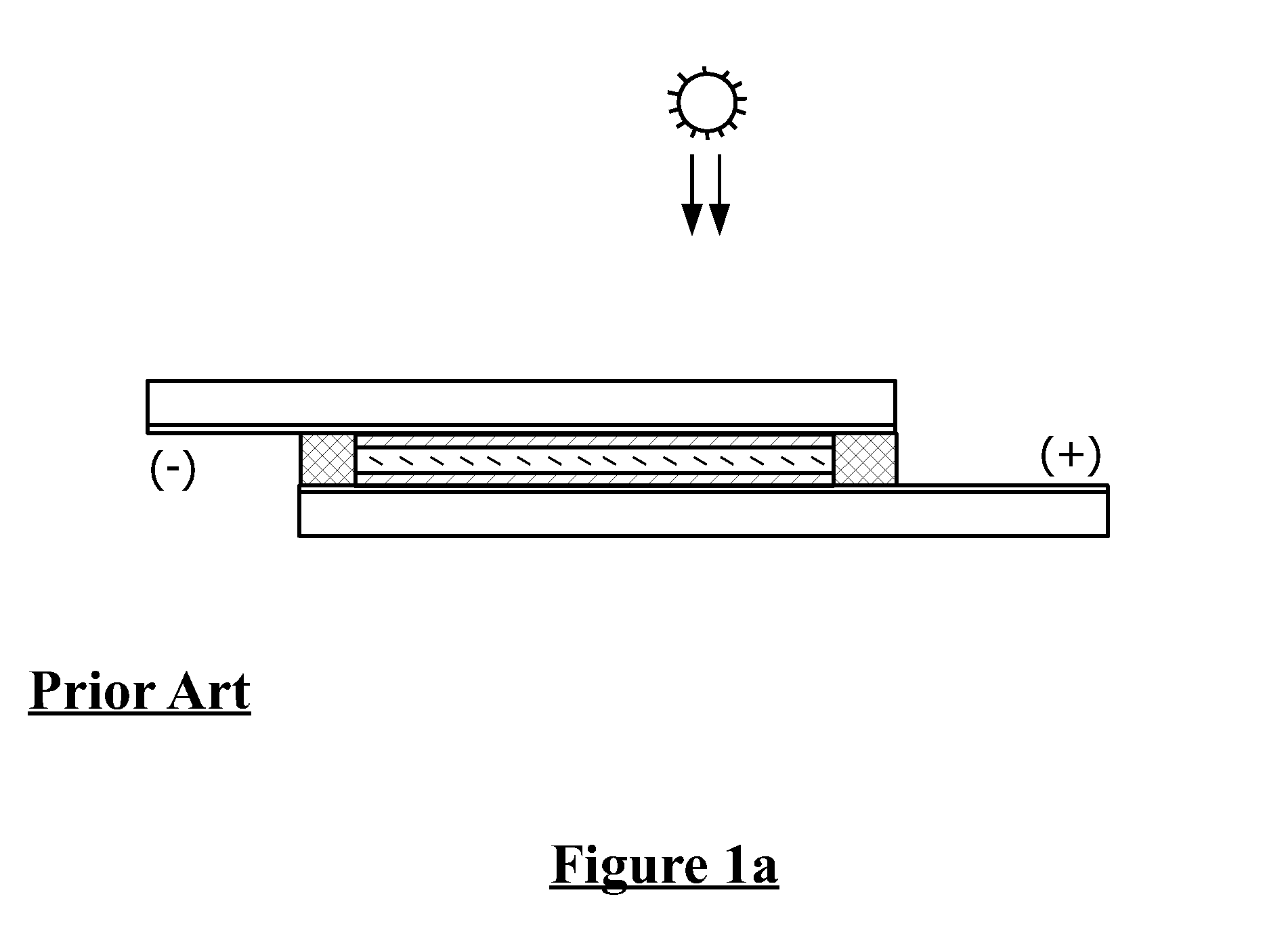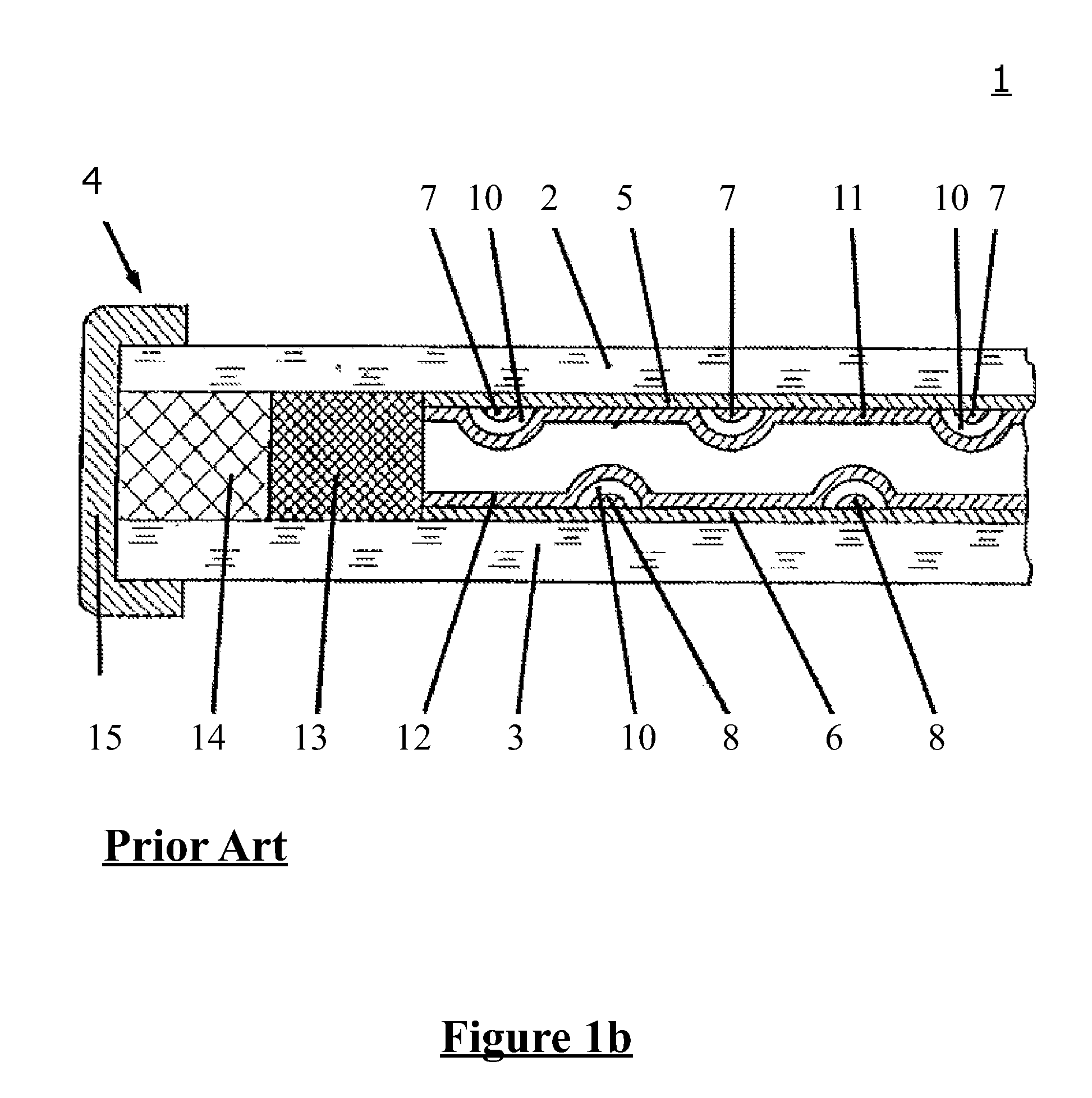Solar cell device
a solar cell and solar cell technology, applied in the field of photovoltaic cells, can solve the problems of limited thickness, conductive glass coated with tin oxide is extremely thin, and ohmic loss through conductive glass is a major problem, and achieve the effect of low-grad
- Summary
- Abstract
- Description
- Claims
- Application Information
AI Technical Summary
Benefits of technology
Problems solved by technology
Method used
Image
Examples
Embodiment Construction
[0074]The principles and operation of the photovoltaic cells according to the present invention may be better understood with reference to the drawings and the accompanying description.
[0075]Before explaining at least one embodiment of the invention in detail, it is to be understood that the invention is not limited in its application to the details of construction and the arrangement of the components set forth in the following description or illustrated in the drawings. The invention is capable of other embodiments or of being practiced or carried out in various ways. Also, it is to be understood that the phraseology and terminology employed herein is for the purpose of description and should not be regarded as limiting.
[0076]The present invention overcomes these and other problems and paves the way to the manufacture of an efficient, commercially viable device. Various aspects and embodiments of the present invention are described hereinbelow:
[0077]One aspect of the present inven...
PUM
 Login to View More
Login to View More Abstract
Description
Claims
Application Information
 Login to View More
Login to View More - R&D
- Intellectual Property
- Life Sciences
- Materials
- Tech Scout
- Unparalleled Data Quality
- Higher Quality Content
- 60% Fewer Hallucinations
Browse by: Latest US Patents, China's latest patents, Technical Efficacy Thesaurus, Application Domain, Technology Topic, Popular Technical Reports.
© 2025 PatSnap. All rights reserved.Legal|Privacy policy|Modern Slavery Act Transparency Statement|Sitemap|About US| Contact US: help@patsnap.com



